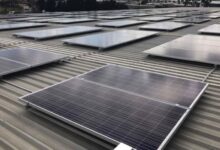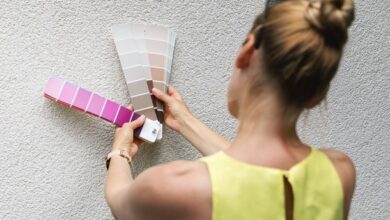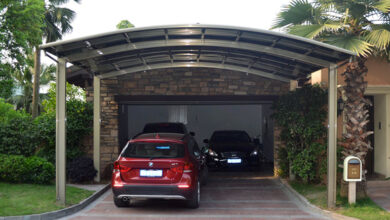
TPO roofing vs EPDM roofing
When there is a need for selecting a quality and energy-efficient solution for a commercial roofing system, people tend to have two choices, viz; Thermoplastic Polyolefin (TPO) roof system or an Ethylene Propylene Diene Monomer (EPDM). While both are single-ply roofing membranes, they both have different uses, importance, and disadvantages.
Unlike residential buildings, commercial buildings require a flat roofing system due to the larger expanse of space they cover.
So in this post “TPO roofing vs EPDM roofing”, we will talk about the advantages and disadvantages of both and help in the selection of which is best suited for your ongoing project.
Table of Contents
TPO Roofing; All you need to know about it.
As pointed out earlier, TPO stands for Thermoplastic Polyolefin and is acclaimed to be the fastest-growing commercial roofing system in the market. This is due to the energy efficiency and eco-friendly satisfaction it enjoys.
TPO is made up of a single layer of synthetics and reinforcing scrim that can be used to cover flat and semi-flat roofs. Its constituent materials are a combination of polypropylene and ethylene-propylene rubber. It can be fastened mechanically or through an adhesive that bonds to the cover board
Pros of TPO as a roofing membrane.
Energy Efficiency
TPO has a higher energy efficiency unlike other materials as it reflects sunlight efficiently. This reduced the need for much cooling and thereby saving cost on energy requirements to power those cooling air conditioning systems.
High Resistance to Punctures
Punctures are when leaks occur whenever the rain is pouring. TPO has a higher resistance to this type of puncture and protects the building thrice as much as other types of roofing systems.
Highly Durable
TPO roofing system is always welded and this gives its very durability status. It also prevents the growth of mold and dirt accumulation.
Cons of TPO
- The need for hot welding requires a high-quality installation to hold.
- Being a new product, there is an unproven track record over time.
- Repairs works may be harder as it will require electricity for any welding to be carried out.
EPDM Roofing; All you need to know.
EPDM is commonly known as a rubber roof as it is believed to have an extremely durable synthetic rubber roofing membrane. It is formed by a combination of mixtures of ethylene and propylene in different proportions. The chemicals used in the makeup of EPDM are gotten from oil and natural gas. It is mostly used on low sloped or flat roofs.
There are various options for contractors on its installation process and this makes it most sought after due to the easy installation process it has. One of the simplest methods of installation is striping the roof bare, applying adhesive, and rolling out the membrane. Also, fasteners can be used for difficult-hard-to-reach areas of the roof.
Pros of EPDM
Durable
EPDM has been available for a long while and has enjoyed a proven record of durability. Though it is cost-effective, this doesn’t preclude the quality of materials in use. It has a longevity period unparalleled by other roofing membranes.
Strong Resistance
Its durability is highly dependent on its strong resistance to membrane fatigue, ultraviolet radiation, heat, fire, hail, and other structural threats. It is highly encouraged for areas with extremes weather conditions.
Easy Installation Process
It is very easy and painless to install as it doesn’t require any special equipment or instrument during installation. This alone reduces the labor costs for their application.
Requires Less Maintenance
Though it warrants timely and frequent maintenance as they age, the repair works necessary for this are not demanding.
Cons of EPDM
- EPDM can be fragile in the wrong environment and at the very last stage of their life.
- EPDM is not energy efficient as it allows sunlight to pass through them. This may increase the energy need for cooling the building.
Conclusion
Largely, your choice of one above the other should be largely dependent on your environmental conditions such as accounting for hail, heat, and rain, and your needs such as the installation of solar panels on the roof.








